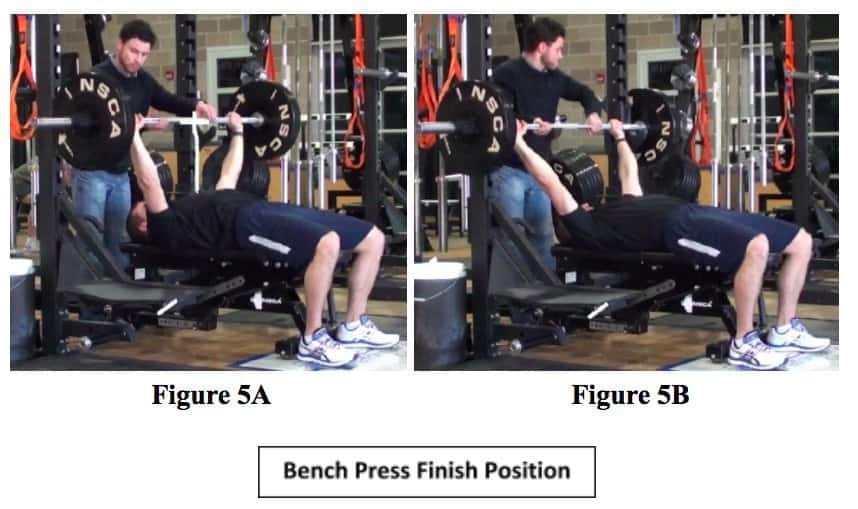Barbell Flat Bench Press
The barbell bench press is a classic and widely used exercise. For bodybuilders, powerlifters, athletes, and the weekend warriors the bench press is a staple chest exercise in many workout programs.
For powerlifters, it is known as one of the “big three” lifts which include the squat, deadlift, and bench press, and for bodybuilders, the bench press is a compound exercise that targets many of the muscles in your upper body.
By performing the bench press, you or your clients are primarily working the pectoralis major (chest). This move also works the triceps and shoulders.
Determining Grip Width for the Bench Press
- Use any dowel rod or PVC pipe
- Place hands on a dowel rod or PVC pipe and place it at the base of the sternum (bottom of chest muscles)
- Adjust grip width to align hands and elbows (Figures 1A and 1B)
- Measure distance between hands (this will be your grip width for the bench press)
Starting Position (Figure 2)
- Lie in a supine position on a bench in the five-point body contact position.
- Head, shoulders, glutes, and both feet (flat on the floor)
- Place the body on the bench so that the eyes are below the racked bar.
- Grasp the bar with a closed, pronated grip
- Grip width will be determined by the Bench Press Measurement Protocols
- Signal the spotter for assistance in moving the bar off the supports.
- Position the bar over the chest with the elbows fully extended.
Starting Position: Spotter
- Stand erect and very close to the head of the bench (but do not distract the athlete).
- Place the feet shoulder-width apart with the knees slightly flexed.
- Grasp the bar with a closed, alternated grip inside the athlete’s hand (Figure 3A)
- At athlete’s signal, assist with moving the bar off the supports (Figure 3A)
- Guide the bar to a position over the athlete’s chest (Figure 3B)
- Release the bar smoothly.
Downward Movement Phase
- Lower the bar to touch the chest just below the nipple level or at the base of the sternum.
- Keep the wrists stiff and the forearms perpendicular to the floor and parallel to each other.
- Maintain the five-point body contact position.

Upward Movement Phase
- Push the bar upward until the elbows are fully extended.
- Keep the forearms perpendicular to the floor and parallel to each other.
- Bar path is fairly straight up
- Maintain the five-point body contact position.
- At the end of the set, signal the spotter for assistance in racking the bar.
- Keep a grip on the bar until it is racked.










